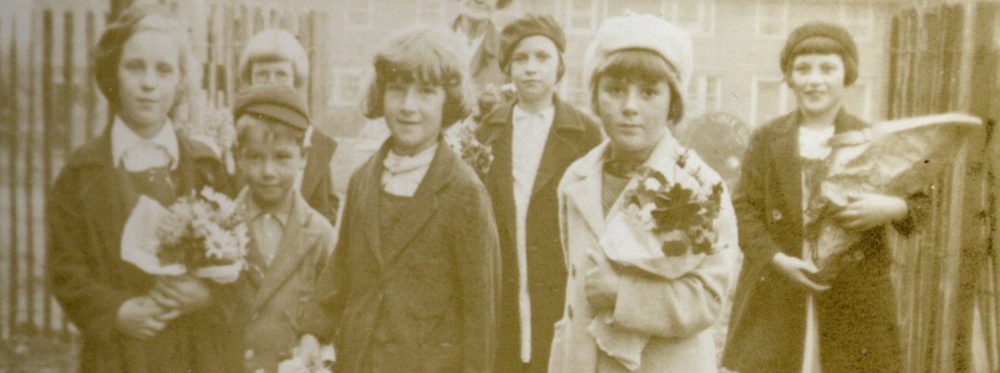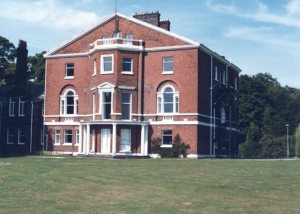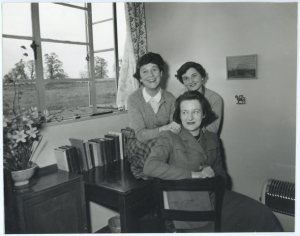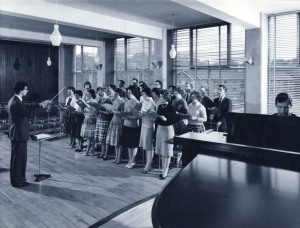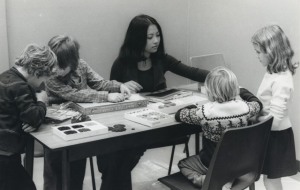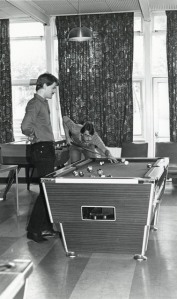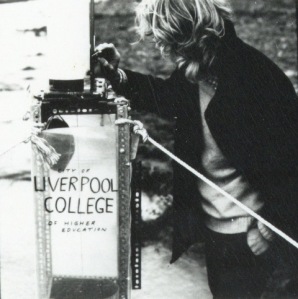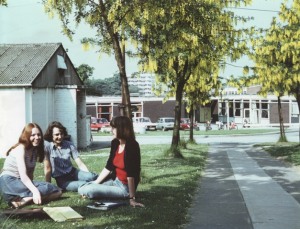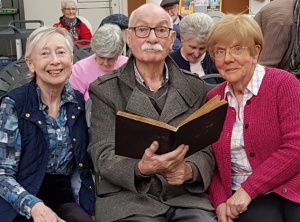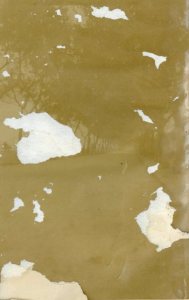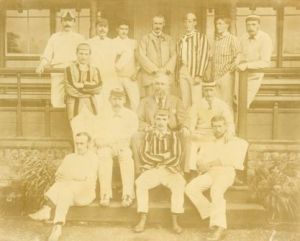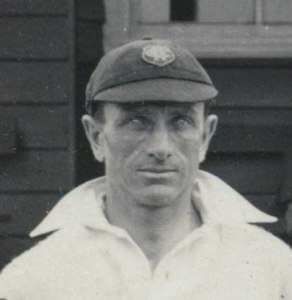With the support of the National Lottery Heritage Fund, Knowsley Archives have been busy cataloguing, conserving and preserving the archives of C.F. Mott College that are stored in the ARK. This remarkable and innovative college had a campus that straddled the Huyton and Prescot border and at its heart was the Hazels, a stately 18th century building that had been owned by, amongst others, members of the Pilkington family and is still standing. The college was named after a distinguished former Director of Education for the City of Liverpool, Charles Francis Mott.
Founded in 1946 in response to the national shortage of teachers following the end of the Second World War, C.F. Mott College would eventually go on to become one of the largest and most successful teacher training colleges in the country with a reputation for academic innovation. By the 1970s, the college was also offering degree courses in the arts, humanities, social sciences and science, before finally merging with Liverpool Polytechnic (which later became Liverpool John Moores University) in 1983.
At first, the college was women-only and relatively small. In 1951 Dr. D.M. Farr replaced Miss Whiting as Principal and she would lead a rapid expansion of the campus, with additional buildings, sports and leisure facilities, as well as accommodation for students and staff. As the campus developed, student numbers increased and the social life of the students evolved. Dr. Farr would later write proudly of the “acquisition of a good dance floor [that] changed the whole outlook of college life.” She was keen to ensure that students from the University of Liverpool were invited to take part in activities at the college (and vice versa) so that social events received a new impetus. This enthusiastic encouragement of the students’ social and leisure life was regarded by Dr. Farr as “a welcome prevention of the ‘cosiness’ which can overtake a small women’s college.”
In 1959 the college became a mixed college and male students were admitted for the first time. This was another period of rapid expansion for the college, with new postgraduate courses being added to the curriculum and a surge in staff and student numbers.
As innovative as Dr. Farr appears to have been, college life during the 1950s and 1960s can seem strangely archaic to our modern eyes. Among the college archives are House Committee minute books that reveal the very serious and lengthy debates the staff would have about aspects of the students’ lives. Over the course of several years, from the mid-1950s to the early 1960s, the use of gramophones was a hot topic at House Committee meetings: how loud should they be (not very)? Should students be allowed them in their own bedrooms (can’t they just make do with the wireless and gramophones in the common rooms?)?
Even sunbathing was raised at the House Committee meetings. The sight of female students catching a few rays was resulting in “visitors being embarrassed” in 1956 and students were instructed to sunbathe only where there was no risk of them being spotted! Who these visitors were and why they were looking in the first place is never mentioned!
Another common debate that pops up time and time again in the House Committee minutes concerns the clothing students were allowed to wear. It is worth bearing in mind that, for much of its history, the college was purely a teacher training college, so students will have been working on placements in schools. For the college staff it was important that trainee teachers were perceived as smartly dressed and positive role models for children. However, it may come as a surprise to learn that this extended to what clothing was acceptable for students to wear at any time. In summer 1956, staff were reminded that no one should be wearing jeans. However, “special permission would be given to cyclists if they asked for it.” This debate would rumble on for the next few years with change only coming in 1960, when it was decided that new or clean jeans could be “presentable,” although old ones looked “scruffy and untidy.” It was agreed that smart jeans would, for the first time, be officially allowed…sort of: this change would only apply to male students!
For female students, clothing restrictions would be more stringently applied for several more years. While men were strolling around campus sporting their smart new jeans, the female students were fighting for the right to wear slacks in the TV room. This was eventually allowed in 1960, but there remained a great concern about how female students were presenting themselves to the outside world and “apart from hiking and college expeditions, women students must not wear slacks outside college.”
Of course, the times they were a-changin’ and the college would become more and more liberal in its approach to student life, with late 1960s, 70s and 80s photographs in the archive showing both male and female students in jeans, slacks and all manner of clothing that would probably have appalled the House Committee of a generation before.
The traditions of constant evolution, expansion and adaptation that Dr. Farr had begun would continue with her replacements, Mr. Clarke (1965-1974) and Mr. Cane (1974-1983). The college had a number of minor name changes during its history and, following the addition of degree courses validated by the University of Lancaster, it became the C.F. Mott campus of the City of Liverpool College of Higher Education (COLCHE) in 1978. Within a few years, the college merged with Liverpool Polytechnic and the campus closed, but its expertise in arts and humanities would make a significant contribution to the Polytechnic’s fine reputation in these areas, maintained by the current Liverpool John Moores University.
Get in touch! We’re keen to hear from former college students and staff who would be interested in having their memories recorded for future generations or would like to deposit any mementos of the college with the archive.
An exhibition about the college will be at Kirkby Library from 14th November 2019 – 31st January 2020. A private view event will take place at Kirkby Library on Wednesday 13th November 2019, 6-8pm, and will be a chance to see the exhibition first and hear a short talk about the archive collection. Please note, this is an RSVP-only event. Please reserve your place by emailing daniel.copley@knowsley.gov.uk or calling Knowsley Archives on 0151 443 4291.
